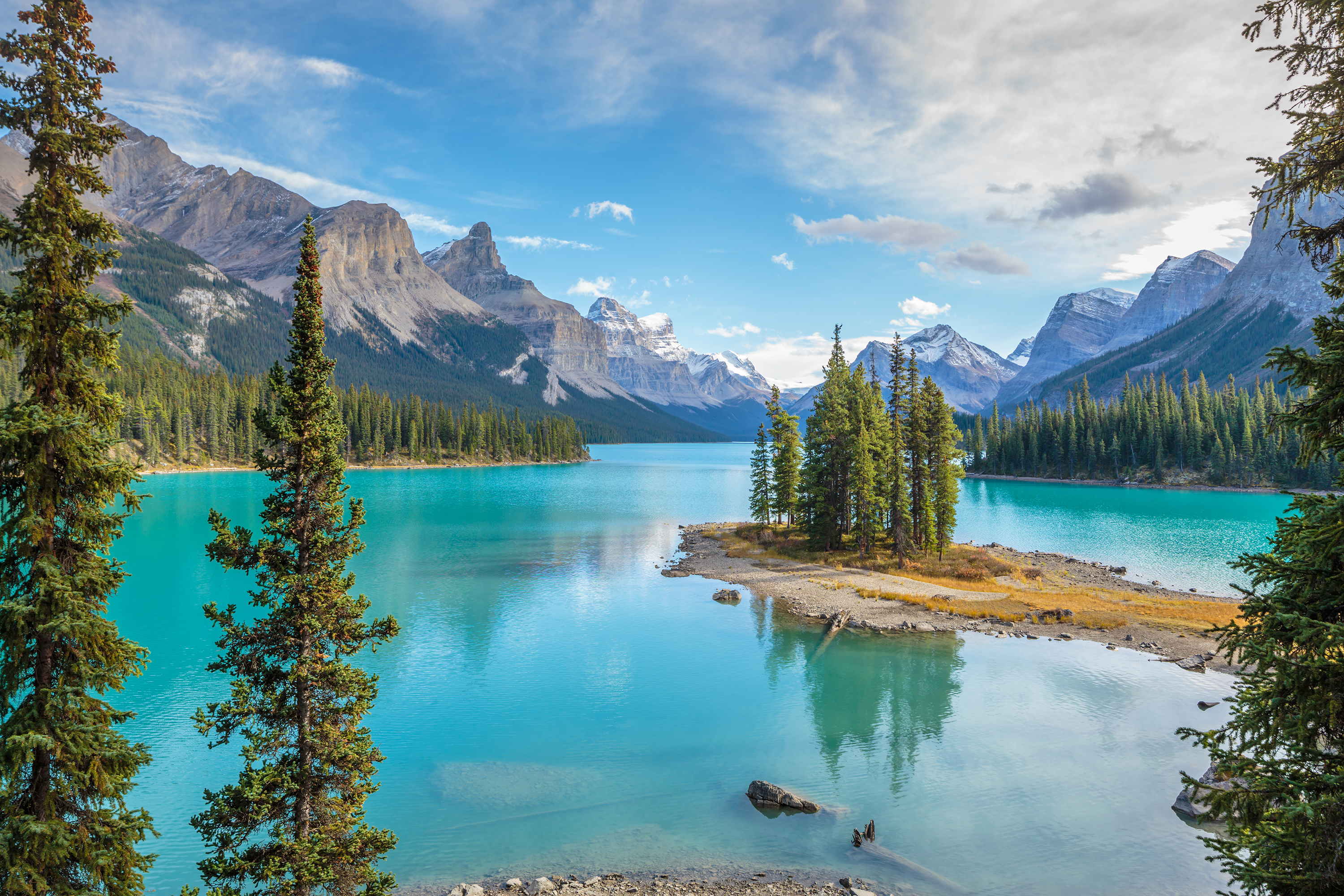Jasper National Park lies in the Rocky Mountains of western Alberta. It features magnificent mountain scenery, large glaciers, beautiful lakes and rivers, and abundant wildlife. The park covers about 2,718,200 acres (1,100,000 hectares).

A scenic highway called the Icefields Parkway winds through the mountains of Jasper National Park. From this highway, motorists can view such majestic peaks as Mount Athabasca and Mount Fryatt, both of which rise more than 11,000 feet (3,300 meters) above sea level. The Icefields Parkway connects the park to Banff National Park, which lies to the south. The Columbia Icefield, a vast sheet of glacial ice, is partly in Jasper and Banff national parks in Alberta, and partly in British Columbia. The ice field covers 125 square miles (325 square kilometers) and measures up to 1,198 feet (365 meters) deep. The Athabasca Glacier flows from the ice field.
Other attractions in Jasper National Park include a gorge called Maligne Canyon, which is 166 feet (51 meters) deep, and Maligne Lake, the largest glacially fed lake in North America. Maligne Lake is about 14 miles (22 kilometers) long. Tourists also visit such sites in the park as Athabasca Falls, Medicine Lake, Miette Hot Springs, and The Whistlers, a mountain accessible by aerial cable car.
Jasper National Park has large forests of such evergreen trees as firs, pines, and spruces. In summer, colorful wildflowers grow in the valley meadows. Animals in the park include bighorn sheep, black and grizzly bears, elk, golden eagles, mountain caribou, mountain goats, ptarmigans, and wolves.
Jasper National Park was established in 1907. The park offers a variety of activities, including fishing, golfing, hiking, and camping in summer and cross-country and downhill skiing in winter. It has about 1,800 campsites and 746 miles (1,200 kilometers) of trails. The resort town of Jasper in the central section of the park has hotels, motels, and other tourist facilities.
